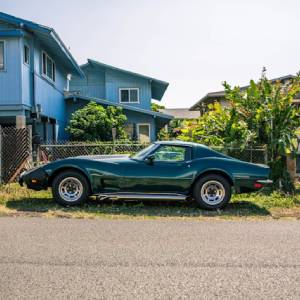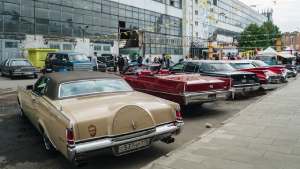Motor TV shows have a big impact on our culture, shaping how we view cars and their role in our lives. From racing and car restoration to exploring automotive technology, these shows reach many people and influence different aspects of pop culture. This article looks at how motoring TV shows affect car culture, fashion, music, social behaviour, and more.
The Growth of Car Culture Series
They started to gain popularity in the late 20th century as cars became more common in society. Shows like “Top Gear,” which began in 1977, and “Pimp My Ride,” which aired in 2004, helped bring cars into the spotlight. These programs offered exciting car reviews, fun challenges, and entertaining hosts, making cars interesting to both enthusiasts and casual viewers.
The Expansion of Digital Platforms
The rise of the internet and social media also helped gearhead shows reach a wider audience. YouTube channels like “Donut Media” and “ChrisFix” allowed fans to connect with creators and learn about cars in a new way. This digital shift made car culture a global phenomenon and increased the influence of car enthusiasts shows on pop culture.
Car Culture and Personal Identity

Automotive TV shows have played a major role in shaping car culture and how people view their vehicles. For many, cars symbolize freedom, status, and personal identity. Shows like “Fast and Furious” popularized the idea of car enthusiasts as a unique community, highlighting subcultures like street racing and drifting.
Defining the Car Enthusiast Community
These shows help define what it means to be a car lover. They promote customization, performance, and community, encouraging viewers to engage in car culture by attending shows, joining clubs, or modifying their cars. This connection between car ownership and personal identity has become a significant part of many people’s lives, influencing their choices and social interactions.
Fashion Trends from Motor TV Shows
These shows also have influenced fashion and style, as car culture often comes with its own set of trends. The visual appeal of cars, along with the personalities of the hosts, creates a unique fashion narrative. Shows like “Overhaulin'” and “West Coast Customs” not only focus on cars but also highlight automotive fashion, from clothing to accessories.
The Rise of Car Enthusiast Fashion
Fashion brands have recognized this trend and often collaborate with motor shows or automotive influencers. The “car enthusiast” style, characterized by branded clothing, mechanic-inspired outfits, and accessories featuring car logos, has gained popularity. Additionally, the aesthetics of classic cars and custom builds influence home decor, art, and lifestyle choices, allowing fans to incorporate automotive themes into their everyday lives.
Music and Motor TV Shows
Music is a vital part of popular culture, and car shows are no exception The soundtracks of these shows typically feature genres like rock, hip-hop, and electronic music, enhancing the excitement of car racing or customization. Pairing thrilling visuals with lively music creates an engaging viewing experience.
The Connection Between Music and Cars
Moreover, they have inspired musicians and their work. Many artists include themes of cars and driving in their lyrics and music videos. Songs that celebrate fast cars or the freedom of the open road are popular across various music genres. Collaborations between musicians and automotive brands have also emerged, connecting car culture and the music industry and amplifying the influence of motor TV shows on cultural trends.
The Role of Social Media
The rise of social media has greatly increased the impact of auto TV programs Platforms like Instagram, TikTok, and YouTube allow fans to share their passion for cars and connect with others. Hashtags like #CarCommunity and #CarsofInstagram foster a sense of belonging among enthusiasts, creating a global community.
Engagement Through Online Content
Motor TV shows often create online content that complements their broadcasts, including behind-the-scenes footage, interviews, and viewer challenges. This interaction keeps audiences engaged and allows them to participate in the car culture narrative actively. Fans can showcase their vehicles, share modifications, and connect with others who share their interests, further strengthening the connection created by these television shows.
Impact on the Automotive Industry
Motor TV shows have a significant impact on the automotive industry as well. They can shape consumer preferences, influencing trends in vehicle design, performance, and technology. For example, shows focused on classic car restoration have revived interest in vintage models, prompting manufacturers to reintroduce classic designs or create retro-inspired vehicles.
Highlighting Innovations in Automotive Technology
These shows also highlight new automotive technologies, such as electric vehicles and autonomous driving. By featuring these innovations, they educate audiences about the future of transportation and influence consumer attitudes toward new technologies. As a result, manufacturers and automotive brands often adjust their marketing strategies to align with the interests showcased in these shows.
Raising Environmental Awareness
As motor TV shows continue to develop, they also address important issues like environmental sustainability. With growing concerns about climate change, many shows have started to feature electric vehicles and eco-friendly practices. Programs like “The Grand Tour” highlight electric cars in exciting ways, helping to normalize discussions around green technology in the automotive industry.
Changing Perceptions About Car Ownership
By integrating conversations about sustainability into their narratives, these kind of shows contribute to changing how people view cars and their environmental impact. This shift influences viewers’ choices, encouraging them to consider eco-friendly options when buying vehicles or modifying their cars. As audiences become more aware of environmental issues, the automotive industry must adapt to meet these changing preferences.
The Global Reach of Motor TV Shows

They have a worldwide audience, reaching fans across different cultures and backgrounds. This global appeal helps to spread car culture, as enthusiasts share their passion for vehicles regardless of where they live. Shows like “Top Gear” and “The Grand Tour” have international versions, making car culture accessible to people everywhere.
Bridging Cultural Gaps
By showcasing cars from different regions and highlighting unique automotive practices, motor TV shows help bridge cultural gaps. They introduce viewers to vehicles and customs they may not have encountered otherwise, fostering a sense of connection among car lovers worldwide.
Conclusion
Motor TV shows have a lasting impact on pop culture, influencing everything from fashion and music to social behaviour and consumer trends. Their effect on car culture has created a vibrant community of enthusiasts who share a passion for vehicles and the lifestyle that comes with them. As upcoming shows evolve, they will continue to play a key role in shaping future trends in the automotive industry and popular culture.

